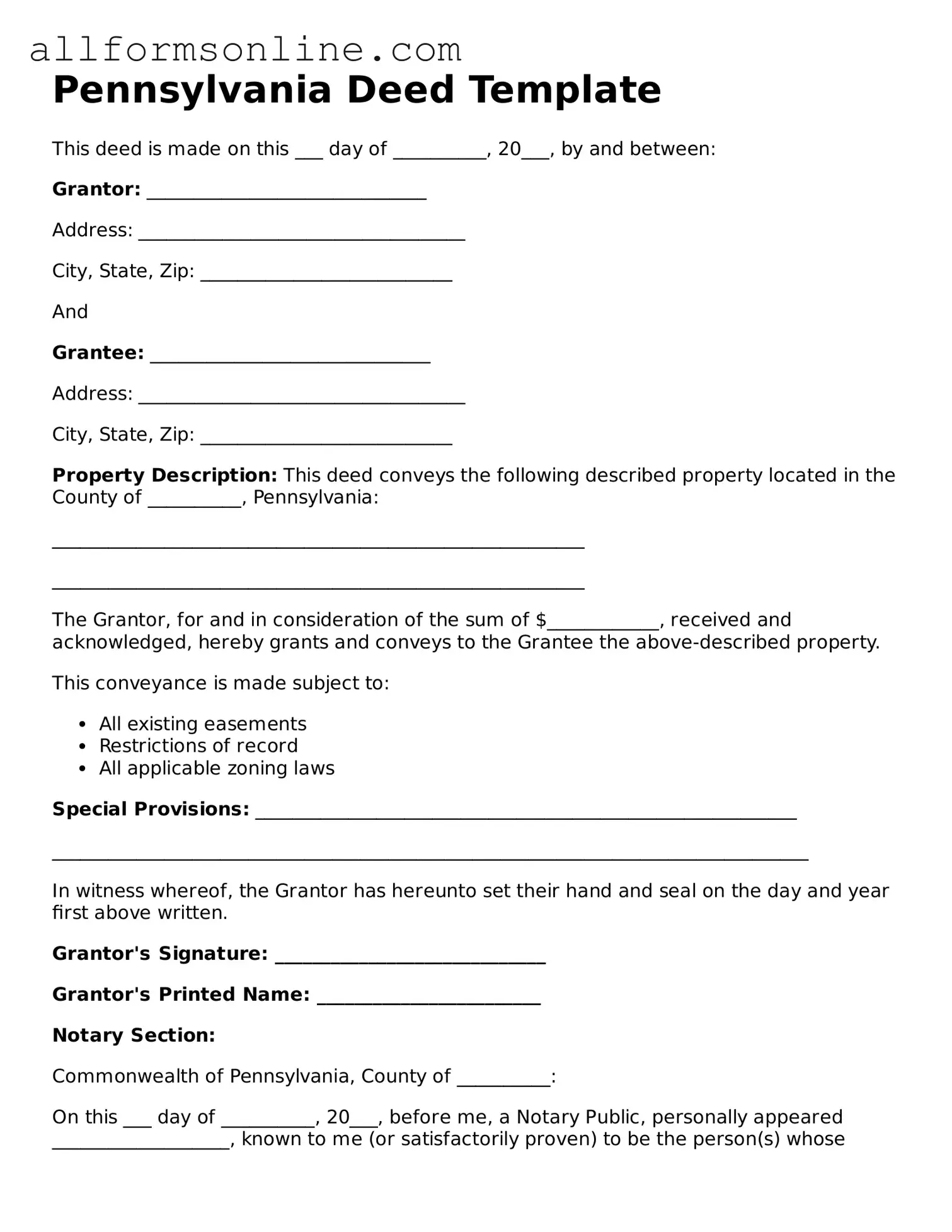What is a Pennsylvania Deed form?
A Pennsylvania Deed form is a legal document used to transfer ownership of real estate in Pennsylvania. It serves as proof of the transfer and outlines the details of the property being conveyed, including the names of the parties involved and a description of the property. This document must be properly executed and recorded to ensure the transfer is legally recognized.
What types of deeds are available in Pennsylvania?
In Pennsylvania, several types of deeds can be used, including Warranty Deeds, Quitclaim Deeds, and Special Warranty Deeds. A Warranty Deed provides the highest level of protection to the buyer, guaranteeing that the seller holds clear title to the property. A Quitclaim Deed transfers whatever interest the seller has in the property without any guarantees. A Special Warranty Deed offers limited warranties, protecting against issues that arose only during the seller's ownership.
How do I fill out a Pennsylvania Deed form?
To fill out a Pennsylvania Deed form, start by entering the names and addresses of the grantor (seller) and grantee (buyer). Next, provide a legal description of the property, which can typically be found on the previous deed or property tax records. Be sure to include the date of the transaction and any consideration (payment) involved. Finally, both parties must sign the document in the presence of a notary public.
Is notarization required for a Pennsylvania Deed?
Yes, notarization is required for a Pennsylvania Deed. The signatures of both the grantor and grantee must be acknowledged before a notary public. This step is crucial as it helps to verify the identities of the parties involved and confirms that they are signing the document willingly.
How do I record a Pennsylvania Deed?
To record a Pennsylvania Deed, take the completed and notarized document to the county recorder of deeds office in the county where the property is located. There, you will submit the deed along with any required fees. Once recorded, the deed becomes part of the public record, providing legal notice of the property transfer.
Are there any fees associated with recording a Pennsylvania Deed?
Yes, there are fees associated with recording a Pennsylvania Deed. These fees vary by county and are typically based on the number of pages in the document. It’s advisable to check with the local recorder of deeds office for the specific fee schedule and any additional requirements that may apply.
What happens if a Pennsylvania Deed is not recorded?
If a Pennsylvania Deed is not recorded, the transfer of ownership may not be legally recognized. This can lead to complications, especially if disputes arise regarding property ownership. Not recording the deed also means that the public will not have notice of the transfer, which can impact future transactions involving the property.
Can I create my own Pennsylvania Deed form?
While it is possible to create your own Pennsylvania Deed form, it is recommended to use a standardized form or consult with a legal professional to ensure that all necessary elements are included. Properly drafted deeds help prevent legal issues in the future and ensure compliance with state laws.
